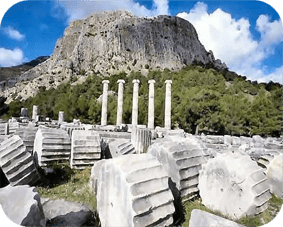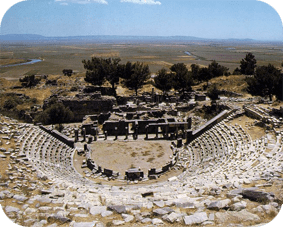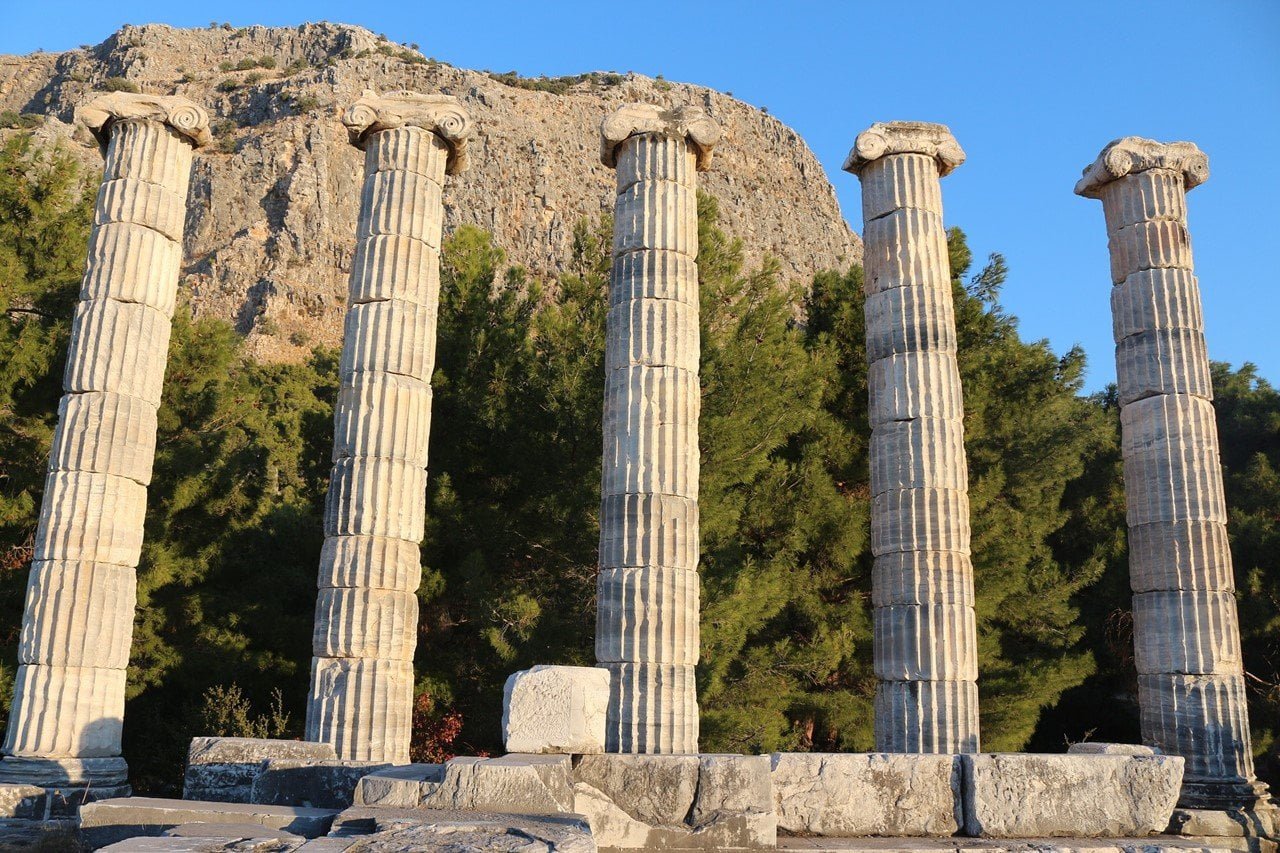


Priene
The historical town of Priene is located near the village of Güllübahçe, 16 kms from Söke. This town, a member of the Ionian Confederation, especially prospered during the Hellenistic period. The beautiful houses, public buildings and temples are the most important parts of this ancient city. The city walls surrounding Priene were 2 meters wide and 6 meters high. The front and rear faces of the walls were built of squared stone blocks while the space in between was filled up with rubble and mud. This construction technique, called “emplekton” is characteristic of the Hellenistic period. The Athena Temple, located on the culminating point of the city, was the oldest, most important and magnificent building in Priene. The architect of the building was Pythius, who also constructed the Mausoleum of Halicarnassus, counted as one of the Seven Wonders of the world. The temple is accepted as being a classical example of the Anatolian-Ionian architectural style. The Agora, an important place in the daily life of ancient cities, where meetings were held to discuss various subjects, was built in the 3rd Century B.C., and covers two blocks in the central part of the city. The Bouleuterion is the best preserved building in Priene. The Boule held its meetings here and took the decisions relating to the administration of the city. The Theatre, built in the 4th century B.C. in Hellenistic style, has reached the present day in a well preserved condition. Like all ancient Greek theatres, the building consists of three main parts: the Skene, the Orchestra, and the Cavea. There were two Gymnasiums in Priene, the “Upper Gymnasium” and the “Lower Gymnasium”. In these buildings, children and young people, besides receiving education, were also trained in physical exercises by the practice of various sports.


0 Comment